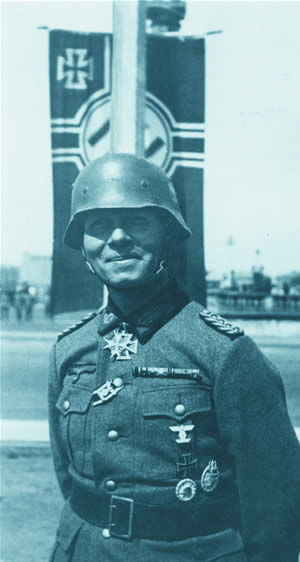
No discussion of the German Army’s performance in North Africa can exclude an analysis of Erwin Rommel, the “Desert Fox.” The war in North Africa made his reputation. On February 12, 1941, Hitler dispatched Rommel by air to Tripoli in response to the major defeat that the Italian units had just suffered at the hands of British and Commonwealth forces. The new commander had with him just a small mobile force to stiffen Italian resolve and to assist them in reversing the possibility of total defeat at the hands of the British-led forces advancing from Egypt. Hitler did not, however, envisage the Africa Corps making spectacular successes, lest the need to protect these accomplishments from British ripostes led to the diversion of precious German reserves away from the impending Barbarossa invasion of the Soviet Union to the North Africa theater.
For his first battle in early 1941, Rommel used mobility and ruse to magnify his slender strength, and this helped win the psychological battle with the British. The Germans even deployed lines of trucks to create dust clouds to give the impression of greater strength, and by such a ploy surrounded and captured the commander and a brigade of the British 2nd Armored Division at Mechili. As in the Western campaign during 1940, here the German Army effectively employed standard ruses de guerre as a force multiplier to maximize their battlefield impact on the enemy facing them.
Rommel’s maverick qualities did little to endear him to the German General Staff, and it was often only Hitler’s patronage that saved him from the wrath of a High Command eager to punish a subordinate who ignored orders. But audacity had its rewards: what remains remarkable about Rommel’s success during the Battle of Gazala, for example, was that Panzer Army Africa remained outnumbered in all key areas. The Germans, in addition, had almost no reserves. This meant that for the battle, the Germans, the attacking side, remained outnumbered three to one in terms of effective armor. The British also outnumbered the Germans three to two in artillery. However, the German advantage of being able to concentrate their guns - mainly 105mm Light Field Howitzer 18 (105mm le FH 18) pieces - rather than distribute them among all their divisions like the British, partially offset this numerical disadvantage. Finally, in terms of air support, both sides were more evenly matched, with roughly 430 British and 350 Axis operational aircraft.
During the First Battle of El Alamein on July 2-4, 1942, Rommel failed in his bid to break the British lines. However, the British were so afraid that he might succeed that British diplomats in Cairo burned their secret papers, the British fleet left the port of Alexandria, and civilians grabbed whatever transport was available to take them east to Palestine. But the German units remained too tired and depleted after their marathon advance to secure victory. This defeat suggests that Rommel’s generalship had its limitations in that he remained willing to fight battles with inadequate forces at the end of overextended supply lines that more cautious commanders would have avoided.
At Alam Halfa, Rommel’s plan employed his well-tried gambit of launching a feint in the north, while swinging through the southern axis to then turn north to the Alam Halfa Ridge, thus cutting the British lines of supply. Though the Quattara Depression restricted the freedom of movement available to the panzers, by September 2 the Africa Corps had nevertheless managed to advance east 20 miles (32 km) to reach the Alam Halfa Ridge. Here, however, fierce enemy resistance, deep minefields, and the battering inflicted from the skies during daylight by British air power, as well as Axis fuel shortages, all combined to halt Rommel’s determined thrust. He often ignored logistical problems, believing that audacity and aggressiveness could offset them. However, in a campaign that was increasingly dominated by such considerations, this was a major misconception.
